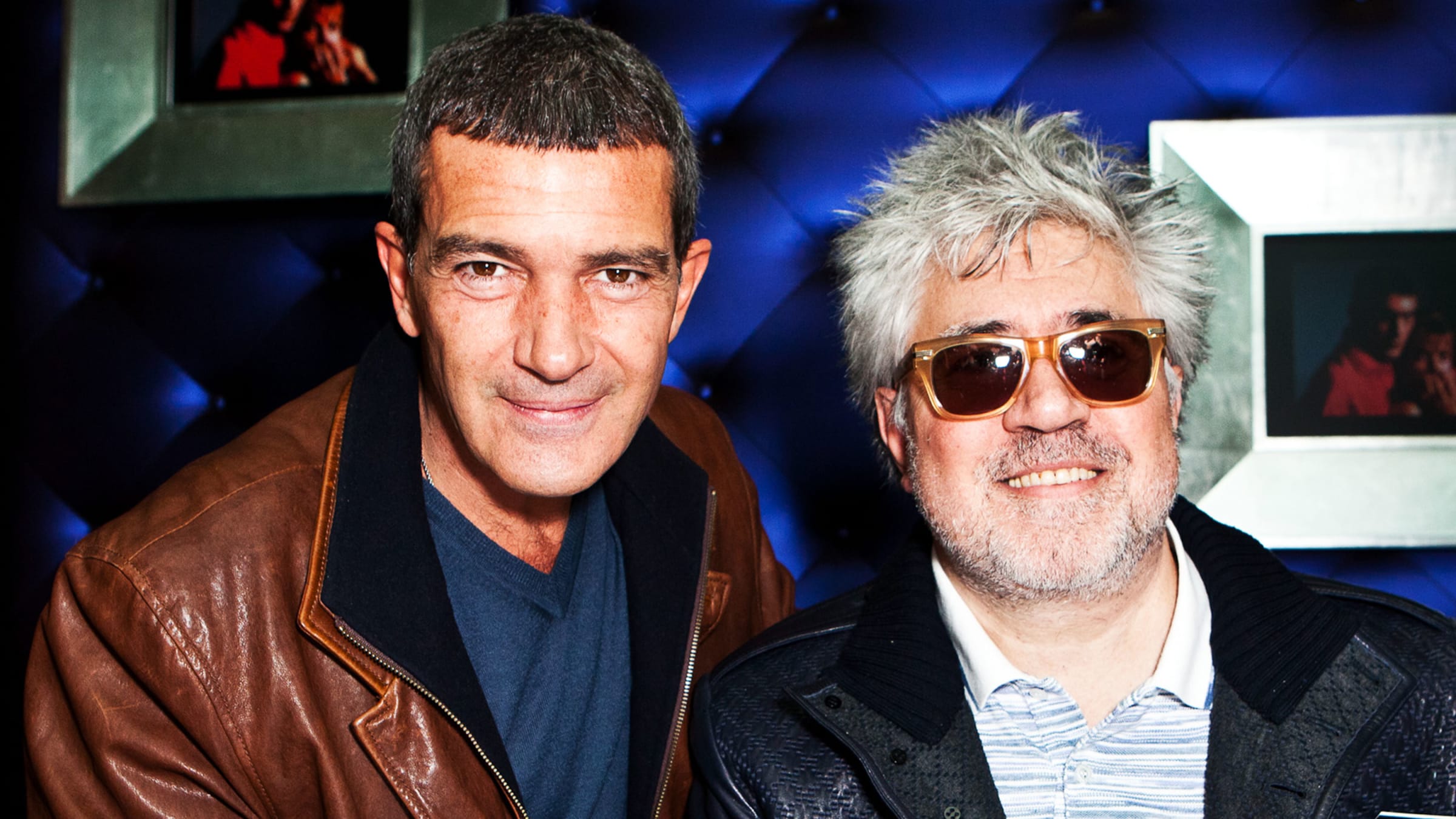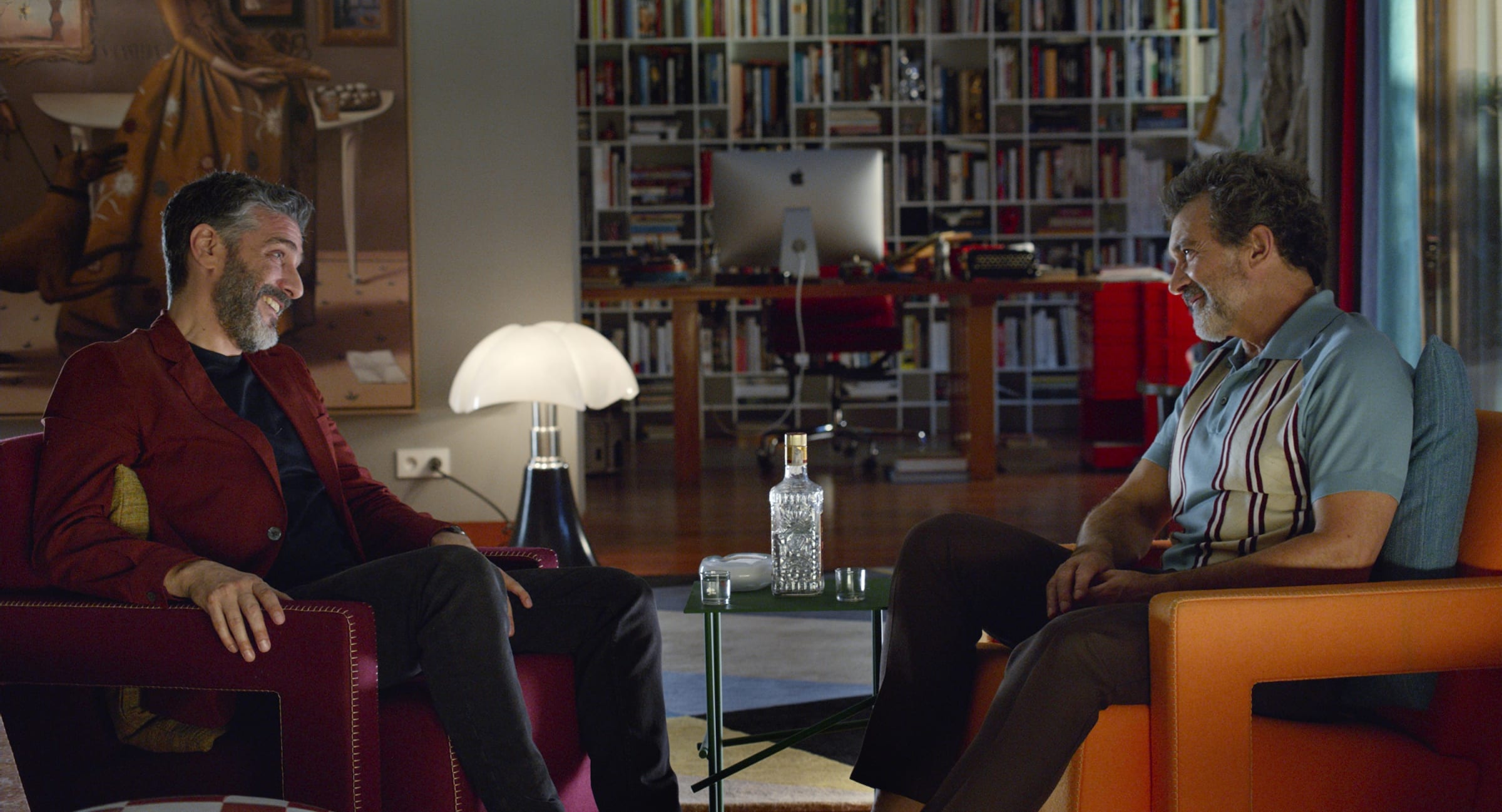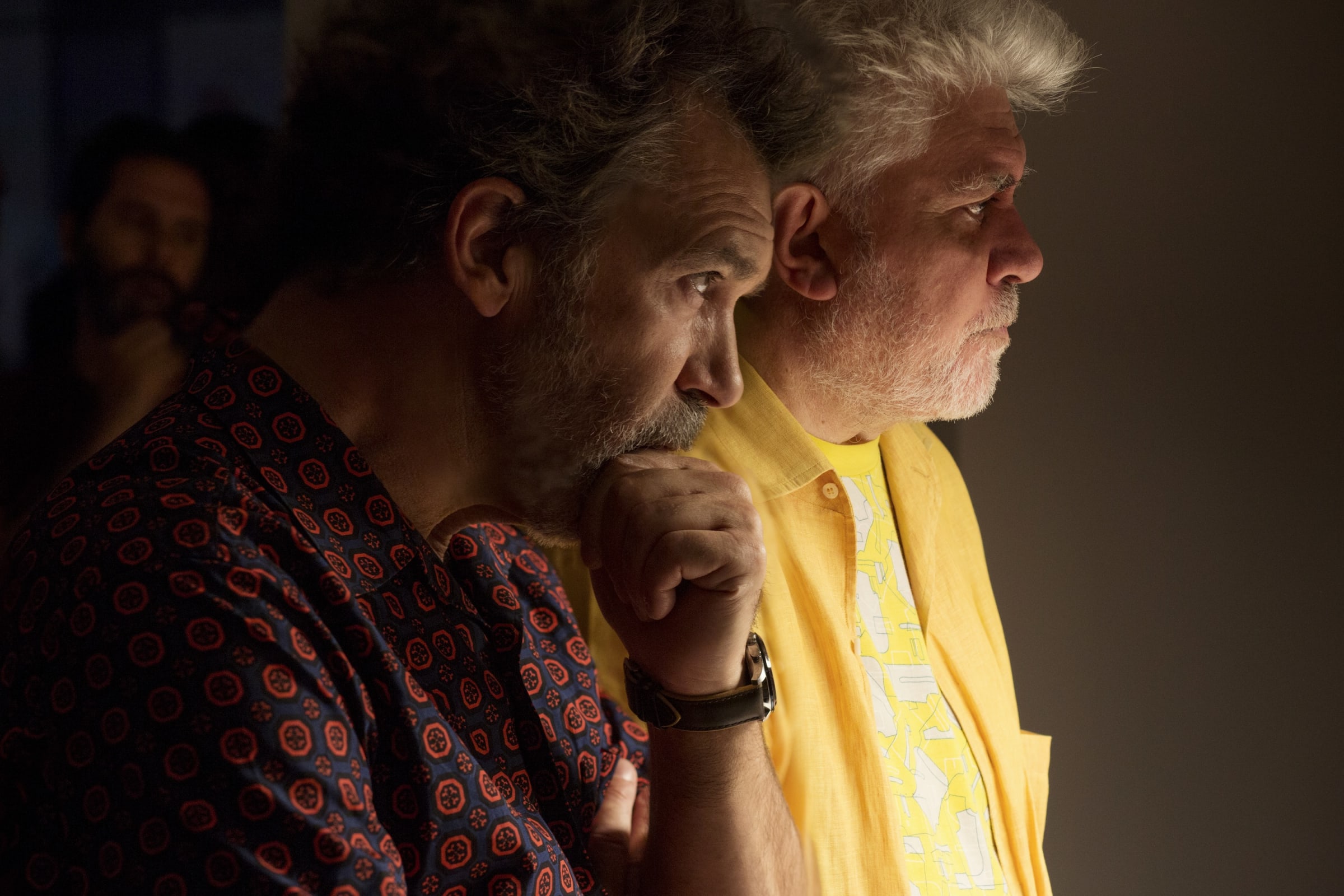‘Pain and Glory’: How Antonio Banderas and Pedro Almodóvar Made the Year’s Most Beautifully Tender Movie

Chelsea Lauren/Getty
The acclaimed director-actor duo sat down with Marlow Stern in New York to discuss their eighth collaboration, which both admit is their most personal work yet.
During one of the first days of shooting on Pain and Glory, filmmaker Pedro Almodóvar pulled his star Antonio Banderas to the side. “I don’t know how to describe it, but there’s something slightly different in your persona,” he told him. “Don’t hide it for the character. Use it. We are talking about pain.”
Pain and Glory marks the eighth collaboration between the legendary Spanish filmmaker and his muse. It centers on Salvador Mallo (Banderas, sporting Almodóvar’s signature spiky hair), a filmmaker in the twilight of his career whose struggles with chronic pain and creative ennui cause him to re-examine the seminal moments of his life, from his sexual awakening as a boy in 1960s Paterna to his torrid affair with Federico (Leonardo Sbaraglia) in ‘80s Madrid. Both contend it is their most personal work yet.
“My sense of Antonio these days is that, because of things that have happened in his life, he has become more sensible and sensitive to certain things,” Almodóvar says of Banderas’ remarkably tender turn. “Something deep in him changed for the better.”
Banderas nods, the warm smile vanishing from his face. “When you see death very closely, there is something that is different; suddenly, all of these things that you considered very important in your life, they sink, and the important things stay at the surface. Those things were my daughter, my family, my friends, and my vocation—not my profession but my vocation as an actor, and telling stories about the complexity of a human being.”
On January 25, 2017, Antonio Banderas had a heart attack—or a “coronary event,” as he so elegantly calls it—and almost died. It is a baffling revelation for anyone who’s had the distinct pleasure of basking in his presence (though 59, the dashing actor doesn’t look a day over 40), and has even confounded his longtime collaborator/pal, who gazes in his direction and proclaims, “He looks amazing.”
The night of his surgery, wherein three stents were planted in his heart, an elderly nurse appeared by Banderas’ recovery room door. “I never saw this nurse before or after,” recalls Banderas. “She says to me, ‘Do you believe in popular culture?’ and I said, ‘Yeah. Why?’ And she asks, ‘Why do you think people say, I love you with all of my heart, and not, I love you with all of my brain, or I love you with all of my kidneys? People say that because the heart is not only an organ that sends oxygen to your body; your heart is a warehouse of feelings, and now you are going to get really sad.’”
“That happened, right then?!” says a surprised Almodóvar, who’s hearing this story for the first time.
“The next three months, it was unbelievable—and trust me, I am not a wet, emotional guy—but I was crying at everything,” he continues. “Music, movies, everything. Fuck! It was like a new universe formed around me.”
Another operation for arrhythmia followed, and Banderas was put on a series of blood thinners, the side effects of which were very Interview with the Vampire. “What happens when you’re on three blood thinners at the same time is you bleed constantly. So, I woke up every morning for a year and a half bleeding—always,” says Banderas. “My pillows were all filled with blood. You touched me and I got a bruise. If I had an accident, I would have died.” When he played Picasso in Genius, a performance that earned him Emmy and SAG nominations, Banderas had to sign insurance papers freeing the production company from any liability should he bleed out. “I have to take aspirin for the rest of my life. Seventy-five milligrams every morning to keep the blood flowing,” he shares, removing a pill from his pocket and holding it to the light.
The most beautiful sequence in Pain and Glory—and perhaps in any film this year—sees Banderas’ Salvador reunite with his star-crossed lover, Federico, in his apartment. As Federico freeheartedly recounts their relationship and how it’s colored his life, Banderas gazes at him with a look of warm affirmation, tears welling in his eyes. “They were seeing each other, which is the most difficult thing, and loved each other no matter what’s transpired in their lives,” explains Almodóvar.
When they filmed the master shot, the scene “didn’t go that far,” remembers Banderas. The following morning, Sbaraglia arrived on set and confessed, “Antonio, I feel a little bit insecure with my lines. Do you mind if we go with you first?” He obliged, and then something strange happened: Sbaraglia extended his hand an inch from Banderas’ heart and began massaging it. “What is that?” a confused Banderas asked him. “It’s going to make you feel better,” asserted Sbaraglia.
“I started the scene, and I couldn’t contain myself. Every word that he said was hitting me like a hammer,” says Banderas. “I thought he was going to cut, and we finished the scene and I said, ‘Pedro, I’m sorry, give me another chance,’ and he said, ‘Are you fucking kidding me? We got it! If you want to do it again fine, but we don’t need it.’”
“I was very moved by that sequence,” adds Almodóvar. “There is fiction and reality, and sometimes reality is just the pretext. But in the case of Federico, it belongs to a period in my life. I know what it means to stop a passionate relationship with someone that, after trying during several years, you have the certainty that you have to stop. And it’s very painful. Everything that is alive, like a passion, is awful to sever. It’s like amputating an arm. And this is the first time that I put it in a movie. The rest around the story, however, is not real, and I did not re-encounter that guy. But fiction helps you lead the lives you wanted to lead that life didn’t allow you to.”

Antonio Banderas and Leonardo Sbaraglia in Pain and Glory
Sony Pictures Classics
Salvador’s remembrances of things past transport him to his childhood in a small village outside Paterna, where he was raised by his strong-willed mother (Penélope Cruz), and the chiseled laborer who introduced him to the vicious pangs of desire. A looming retrospective also impels him to reconnect with Alberto Crespo (Asier Etxeandia), a volatile actor who starred in several of Mallo’s finest films, and whose heroin addiction doomed their relationship.
From an outsider’s perspective, this on-screen reunion bears echoes of Almodóvar and Banderas’ professional estrangement, which lasted 22 years as the actor navigated Hollywood in films like Philadelphia, Desperado, and The Mask of Zorro. But both claim it’s not a send-up of their real-life drama.
“Antonio isn’t the actor I’m talking about there! It’s a mix of actors’ relationships I’ve had in the 21 movies I did,” says Almodóvar. “But seriously, Antonio was present when I had a problem with these two or three different actors, so he knows very well—”
“—where they are buried, and how they were killed!” chimes in Banderas.
“—what I’m talking about,” says a chuckling Almodóvar.
“It’s a Frankenstein’s monster of many actors—and a few actresses, too,” adds Banderas, looking at a grinning Almodóvar. “We kept talking during the 22 years that we weren’t working, and we remained friends. And with this movie, we were connected more than any other movie we’ve done before. It’s a personal feeling I had where, after a week of working, he was confident, released the reins, and I felt a little bit more free. It was not problematic—like in some other shootings, it was far more complex, the relationship.”

Antonio Banderas and Pedro Almodóvar on the set of Pain and Glory
Sony Pictures Classics
The “problematic” shoot Banderas is referring to is The Skin I Live In, the 2011 thriller that saw the duo reunite for the first time since 1990’s Tie Me Up! Tie Me Down!
“I went back after 22 years and I threw on the table everything I’d put together in those 22 years in Hollywood,” says Banderas. “I said, ‘Pedro, this is what I know how to do now, look what I learned, I can do my voice in this way, I can use my body language this way.’ And after a week of rehearsing, he said, ‘You know, that’s great for your American directors, but I cannot use that for my movies. I need Antonio back.’ So we clashed a little bit on The Skin I Live In.”
“It … took time to agree on everything,” Almodóvar confesses. “We needed time to meet each other again in the field of working—not in our personal life, because we see each other ordinarily as friends, and Antonio never left Spain completely. But it’s true, the first time that we worked together again, we needed to work through it. He calls it a big mistake, but it was a natural adjustment.”
“We are friends—that never was broken—and there were beautiful times shooting [The Skin I Live In],” says Banderas. “But it made me think, because I saw the movie in Toronto, and all his ideas were correct. I thought, ‘Oh my god, that’s the character he created that I didn’t even know I had inside.’ That was a big lesson to me: You have to be able to learn from your mistakes.”
